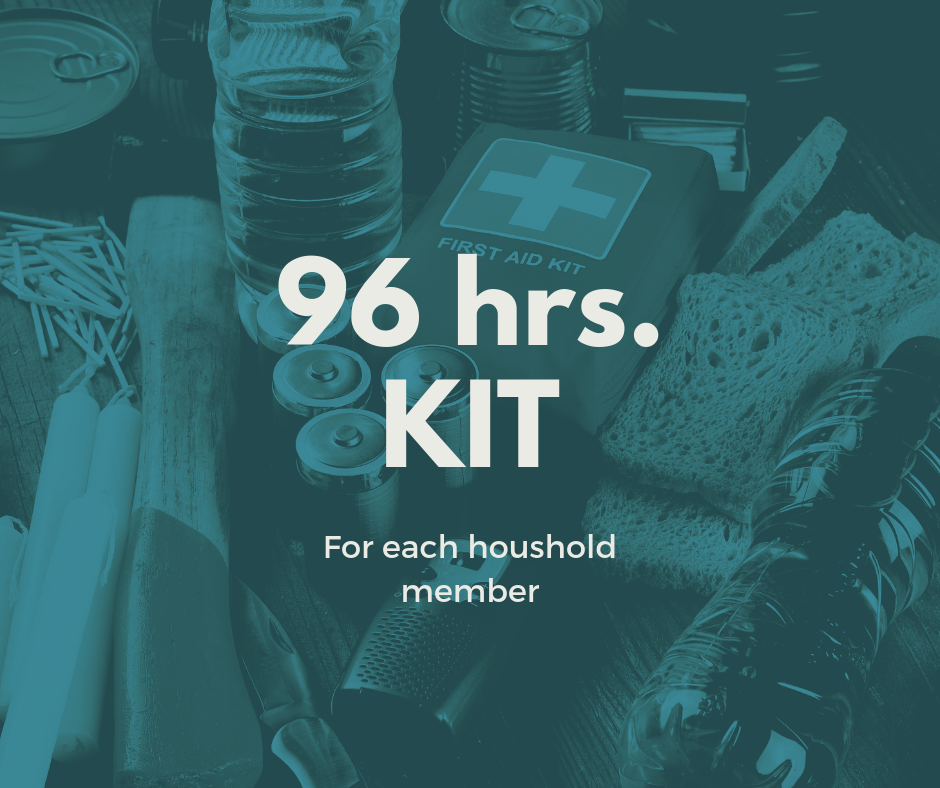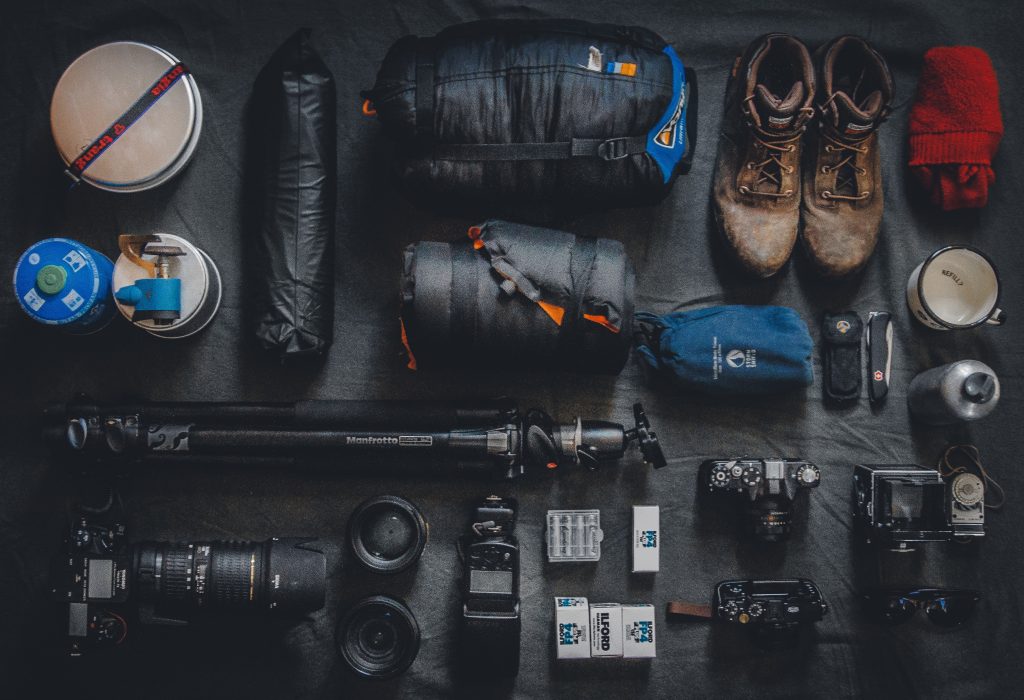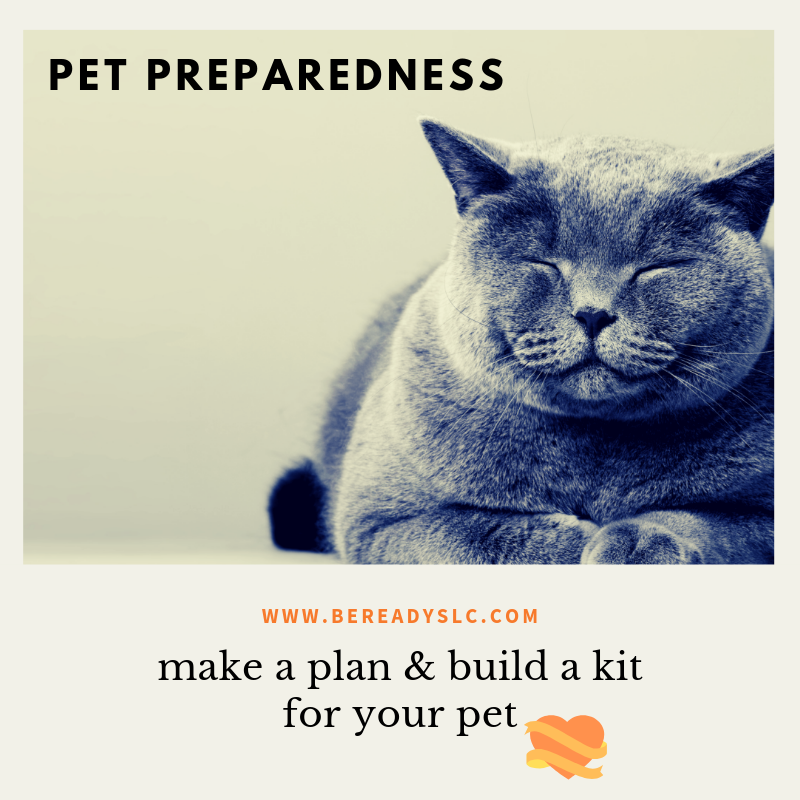
Based on an assessment of the most current data estimating the extent of damage to transportation corridors and critical infrastructure in the Salt Lake Valley, it is estimated that after a 7.0 magnitude earthquake, which is the expected magnitude of the next earthquake in the Salt Lake City segment of the Wasatch Fault, it will be at least 96 hours before resources from outside the area begin to arrive.
Building a 96-Hour kit can be intimidating if you are not an avid camper, hiker, or outdoors person. However, as with anything that seems complex, the best approach is one step at a time. Outlined below are the nine basic categories that should be considered when building a 96-Hour kit. Keep in mind that what is listed below are basic recommendations and that you will need to tailor your kit to fit your specific needs. The best way to do this is to build your kit and then practice with it to discover what additional items you may want (or don’t want) in your kit. The bottom line is that upon its completion, your kit needs to sustain you and the members of your household (pets included) for at least 96 hours. Please feel free to print the versions below:
Have a backpack/mobile kit ready with PLAN9 – 9 items that can save your life
Water
Agua
Obviously one of the most important considerations in building your 96-Hour kit is water. The suggested standard is one gallon of water per person per day. However, there are factors that play into that standard such as age, gender, current health status, physical conditioning, etc.; some people can get by with less, some people may need more. In that water weighs roughly 8 pounds per gallon, it is equally important to have a way to filter water since there is only so much you can carry. Educate yourself on types of water filtration. You do not have to spend a lot of money to have effective water filtration; typically, about $20.00 for a good disposable unit. A good rule of thumb is to make sure it will filter down to at least 2 microns to filter out most bacteria and viruses, down to 1 micron is better. It’s also a good idea to educate yourself on both water purification techniques and potential urban and wilderness water sources.
Additionally consider simple tricks to make your water go further such as keeping sugar free hard candy or, believe it or not, a button in your kit you can stick in your mouth to trick your mouth into making saliva. Just because your mouth is dry when you are hiking doesn’t necessarily mean you are “thirsty” especially if you have a tendency to breath with your mouth open.
Food
Comida
Considering you need 96 hours’ worth of food, weight is an issue. Dehydrated, or even better, Freeze-dried foods are your best weight saving options; additionally freeze-dried foods typically have a much longer shelf life. Much as with water, how much food you need is based on the same factors. Consider that you will use some of your water to re-constitute the freeze-dried food, so being diligent with water usage is a must and re-sealable food pouches will help you save both food and water. Most freeze-dried foods come in four-serving pouches so having a small stainless steel or aluminum cup in your kit will allow you to use only the amount of food and water you need for one serving.
Although you can eat freeze-dried foods without heating them, having a heat source and an ignition source (way to start a fire, i.e. lighter, matches, or magnesium bar) in your kit should also be a consideration. This is also where the stainless steel or aluminum cup will come in handy. Heat sources for this purpose can come in small propane powered heating units or ignitable tablets available anywhere you purchase camping supplies.
Another consideration in addition to the amount of food you need is whether you have dietary restrictions. Make sure you know what ingredients food pouches contain; especially if you have food allergies. Even if you don’t, some emergency foods are by design very rich and have high caloric values with the expectation that the end users will be exerting themselves and require a higher caloric intake than normal. If you are not used to these types of foods or have a sensitive gastrointestinal system they can cause discomfort. Experiment. Try different foods in different brands to find out what you like and what you don’t. Emergency food preparation has come a long way in the last several years and a lot of it is actually pretty good.
Clothes
Ropa
Other than the weight being an issue, when adding clothing to your 96-Hour kit, there are a few other considerations to factor into your choices. First, consider that you should change the clothes in your kit at least twice every year; once for warm weather months and once for cold weather months. Also for both seasons, utilizing “layering” is important for both mobility and comfort. Regardless of the season, your kit should include at least one pair of long pants and one long sleeve shirt as well as gloves and extra changes of underwear and socks. You can wear the same pants and shirts for a few days, but the ability to change undergarments on a daily basis will help to prevent developing rashes and body odor that will lead to not only your discomfort but to those around you. Properly fitting and protective footwear is a must. If you have ill-fitting footwear or footwear that doesn’t provide sufficient protection and you develop blisters or otherwise injure your feet, you won’t get very far. In extreme situations, this can quickly become a life-or-death situation so take care of your feet. Anyone who is in the military or is a wilderness hiker will attest to this.
A good pair of properly fitting and comfortable gloves that provide sufficient protection from rough or sharp objects is a very important item for your kit because if you injure yourself and can’t use your hands . . . well, you can’t use your hands! That can quickly become a problem.
Medications
Medicamentos
If you have a medical condition that requires you to take specific medications at specific times of the day, it is critical that you include them in your 96-Hour kit. Many doctors are willing to prescribe an additional amount if you explain why you need them. If you manage your medications properly, you should only have to do this once.
To make sure you don’t have expired medications in your kit, use the medications in your kit before you refill your prescription then replace the medications in your kit out of your new prescription. If you have medications that require refrigeration, such as insulin, make sure you keep them in an insulated container in an easily accessible location in your refrigerator that you can quickly grab and throw in your kit as you leave.
To assist you in not forgetting to grab your medications, leave a note on top of your kit to grab them. Additionally, keeping a couple of small cold packs in the freezer to throw in the container with your medications is a good way to maintain medications in your kit for a few days.
Flashlight and Extra Batteries
Linterna
A good light source is a must for your 96-Hour kit. A multi-function light is a good choice. There are many new styles of lights that will function as both flashlight and a lantern. Also, LED technology has improved significantly over the last few years to provide a greater quality of light at a lower cost and longer bulb life than standard incandescent or halogen bulbs. Whichever style of light you choose, it probably uses batteries, so include additional batteries in your kit.
NOTE: For any battery-powered items in your kit, you can purchase solar-powered charging devices that are becoming more affordable that can be attached to the outside of your kit and charge batteries, phones, etc. during daylight hours.
Multi-Tool/Can Opener
Multi-Herramienta
Including a multi-tool and/or small tool kit in your 96-Hour kit is just smart for all of the potential unforeseen circumstances you may find yourself in during an emergency. Whether it’s a multi-tool, tool kit, or both, it should include:
- Knife (smooth or serrated blade)
- Bottle opener
- Can opener
- Flathead screwdriver
- Phillips head screwdriver
- Pliers
If you wear glasses, consider a small eyeglass kit as well.
AM/FM Radio
Radio con AM/FM
Including a radio in your kit should be a consideration for multiple reasons. The best option is to have an AM/FM radio that includes NOAA Weather channels. There are also many of the FRS radios (walkie/talkie) that also include the NOAA Weather channel that will provide a means of short range communication between you and other family or group members. Having both of these in your kit is a good option. Though hand crank radios are available and good in a pinch, battery powered is more reliable. Therefore as with flashlights, you should include extra batteries in your kit. See NOTE below.
Hygiene Items
Productos De Higiene Personal
Though often one of the least considered, this is actually one of the most important. Lack of hygiene is the number one cause of post-disaster illness. Items you should consider are:
- Hand sanitizer
- Soap
- Toothpaste/brush
- Mouthwash
- Wet wipes or toilet tissue (Wet wipes will provide the same function as toilet tissue and has many other uses if space in your kit is limited. They will also help your supply of water last longer. If it’s a choice between one or the other, choose the wet wipes)
- Nail clippers
- Washcloth
- Hand towel
- Bath towel
First Aid Kit
Botiquín
Related to medications, a proper 96-Hour kit should include basic first aid supplies to include at least the following:
- Medical exam gloves
- Sterile saline (small bottle for flushing wounds, burns, etc.)
- Alcohol wipes
- Antibiotic ointment (These are available with pain-relieving
ingredients as well) - Assorted adhesive bandages (Waterproof are a good choice)
- Roller gauze (4” recommended)
- 4 X 4 gauze pads
- Medical tape
- Medical shears
- Butterfly strips (For deeper lacerations, Cyanoacrylate – Super Glue, Krazy Glue – will work as well.)
- Elastic bandage (4” recommended)
Depending on your level of knowledge and skill, you may also consider including:
- Splinting materials
- Suture kit
96 Hour Home Kit

Water:
- The basic guideline is 1 gallon of water per person (and pet) per day
- Age, physical conditioning, health issues, weather, geography, and level of physical exertion effect your intake requirements
First Aid Kit:
- Make sure antibiotic ointments and other items are not expired
- Have a sufficient assortment of bandages and gauze
- Have medical tape and shears
- Have medical gloves
- Have proper amounts of any required medications
- Consider whether medications need to be kept cool
- Temperature fluctuations affect all medications
- Consult with your doctor about getting additional medications for your emergency kit
Clothing:
- Make sure clothing is in good condition, fits properly, and is appropriate for conditions
- Have clothing in your kit that allows for layering
- Proper footwear is part of your clothing, again, make sure it is appropriate for conditions
Hygiene Items:
- In a situation were you are having to use your emergency kit, conditions are obviously less than ideal. Improper hygiene can make an already bad situation worse if you become ill
- Include mouthwash, tooth paste, hand sanitizer, wet wipes, soap, etc.
Light:
- The newer LED lights are brighter, use less power, bulbs last longer, and are lighter weight than conventional lights
- Include extra batteries in your kit
- Consider solar powered/rechargeable lighting
Tools:
- A good quality “multi-tool” will include many of the tools you need
- A small sewing kit is a good addition
- Based on the items in your kit determine what tools are appropriate. However, keep weight in mind.
Communications/Radio:
- A basic AM/FM radio is good. One that includes NOAA weather channels is better.
- Know what stations to listen to for emergency alerts and information
- Include extra batteries in your kit
- Consider solar powered/rechargeable radio or power source
Kids Emergency Kit Considerations
Remember, in the event of an emergency, your electronics batteries won’t last long enough to sustain your child for up to 96 hours. Try some paper puzzles, art supplies, books.

Being prepared for an emergency isn’t just about staying safe during a disaster. It’s about how to stay comfortable, clean, fed, and healthy afterwards – when a storm or disaster may have knocked out electricity.
If you lost power, how would you eat? The refrigerator can’t keep foods cold. The microwave can’t warm things up. You might not get clean water out of your faucets. How would you find out whether it was safe to play outside? Not from the TV or computer!
That’s why it’s important for families to work together to build an emergency kit before an emergency strikes. There should be enough food, water, clothing, and supplies to last for at least three days.
Pets Emergency Kit Considerations

What’s in your Pet Preparedness Kit? For more information, please visit Ready.gov/pets
Help protect pets by spreading the word about disaster preparedness.
Download, print and share FEMA’s brochure today.
Emergencies come in many forms, and they may require anything from a brief absence from your home to permanent evacuation. Each type of disaster requires different measures to keep your pets safe, so the best thing you can do for yourself and your pets is to be prepared. For more information visit: ASPCA